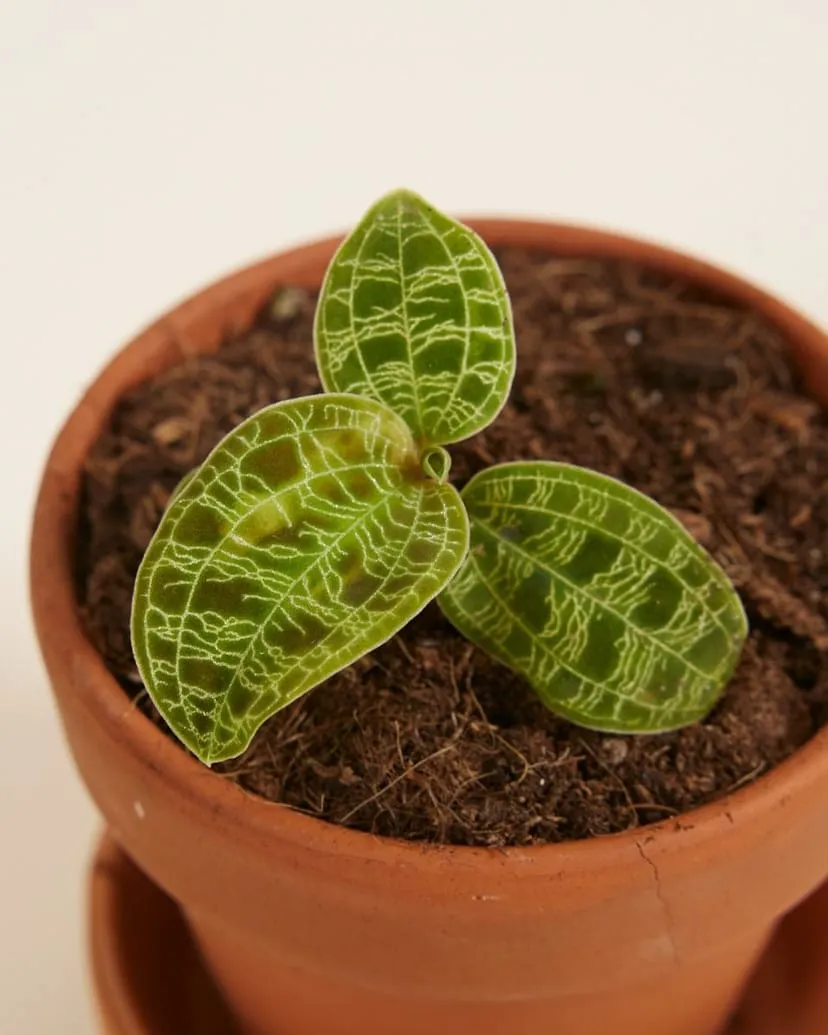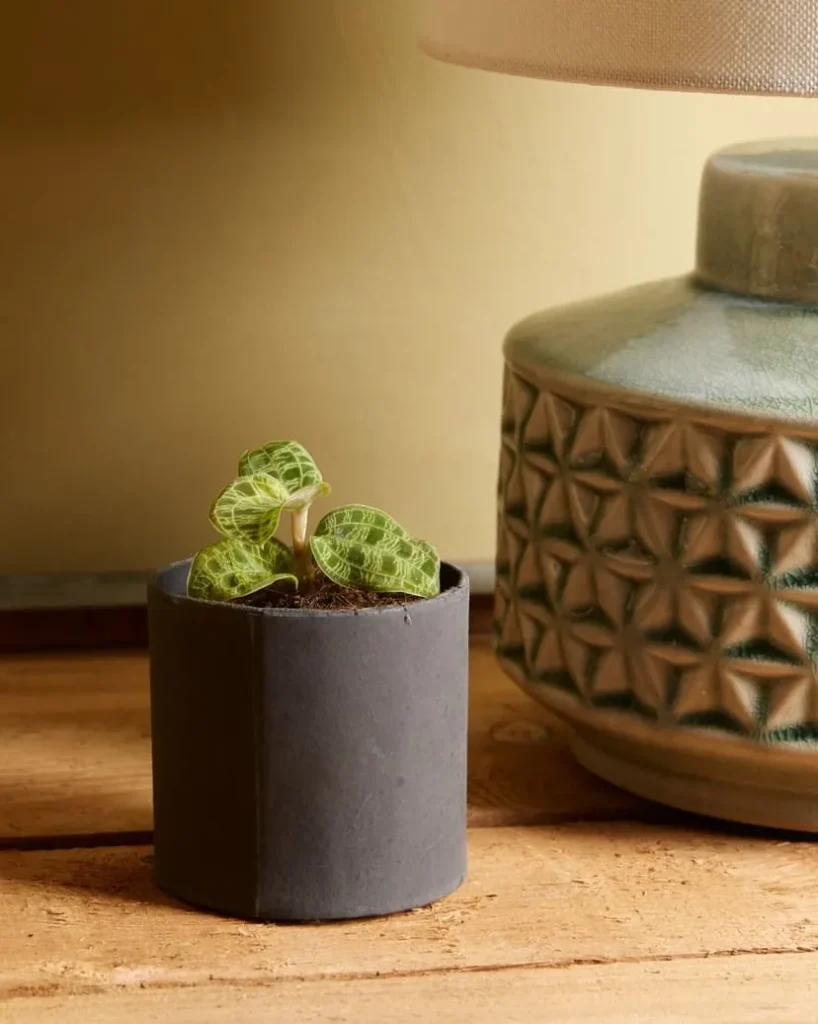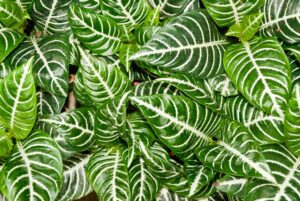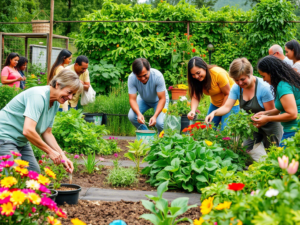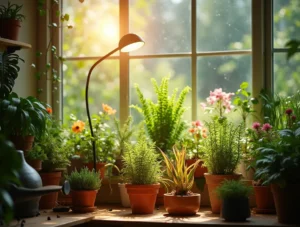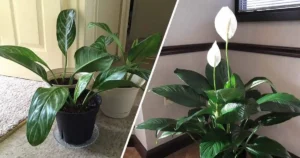The allure of the Baby Jewel Orchid, scientifically known as Macodes petola, extends far beyond its delicate name. This captivating plant, native to the warm, humid rainforests of Southeast Asia, is a true botanical gem. Unlike its more flamboyant orchid relatives, the Macodes petola is not primarily cultivated for its blooms but for its mesmerizing foliage. Its velvety leaves are adorned with intricate, iridescent golden or silvery veins that resemble miniature lightning bolts, creating a stunning visual display. This unique characteristic has earned it affectionate monikers such as the “Lightning Jewel Orchid.”
For anyone looking to introduce a touch of exotic elegance and natural beauty to their bathroom, the Baby Jewel Orchid presents an exceptional choice. The typical bathroom environment, with its elevated humidity levels and generally warmer temperatures, remarkably mimics the plant’s natural habitat. This inherent suitability makes the Macodes petola not just a decorative element, but a thriving green companion that can transform a mundane bathroom into a serene, spa-like sanctuary.
Key Insights for Cultivating Your Jewel Orchid
- Humidity Haven: The Baby Jewel Orchid (Macodes petola) thrives in high humidity, making bathrooms with their natural moisture the perfect environment, mimicking its native rainforest habitat.
- Foliage First: Unlike many orchids, the Macodes petola is celebrated for its intricate, velvet-like leaves with striking gold or silver “lightning strike” veins, not its flowers, adding unique visual appeal to any bathroom.
- Indirect Illumination: This plant prefers bright, indirect light and should be protected from direct sunlight, which can scorch its delicate leaves, making many bathroom settings ideal for its light requirements.
Why the Baby Jewel Orchid Flourishes in Your Bathroom
The secret to the Baby Jewel Orchid’s success in a bathroom lies in its environmental preferences, which align perfectly with the conditions found in most bathrooms.
A Haven of Humidity
High humidity is paramount for the Macodes petola. Originating from tropical rainforests, these orchids are accustomed to environments where moisture content in the air is consistently high. Bathrooms, especially after showers or baths, naturally accumulate significant levels of atmospheric moisture. This provides the continuous humidity that the plant craves, preventing its delicate leaves from drying out and ensuring vibrant growth. While some growers report success in household conditions with humidity around 40-45%, the sustained moisture from regular bathroom use is undoubtedly a major advantage for this plant.
The Art of Illumination: Bright, Indirect Light
Another critical factor is light. Macodes petola thrives in bright, indirect light, mirroring its experience on the forest floor where it receives filtered sunlight through the dense canopy. Direct sunlight, particularly harsh afternoon sun, can be detrimental, causing the exquisite leaf patterns to fade or even leading to leaf burn. Most bathrooms offer this ideal light scenario—often having windows that provide ample ambient light without direct exposure, or opportunities to place the plant away from scorching rays. If your bathroom lacks sufficient natural light, a dedicated grow light can provide the necessary illumination without harming the plant.
Temperature Stability and Air Circulation
These orchids prefer warm, stable temperatures, ideally ranging between 65-80°F (18-27°C). Bathrooms typically maintain consistent indoor temperatures, further contributing to a stable environment for the orchid. While humidity is crucial, proper air circulation is also important to prevent stagnant air and potential fungal issues, especially if leaves get wet. Ensuring some airflow, perhaps through a slightly open window or a bathroom fan, can create a balanced microclimate.
Cultivating Success: Care Guidelines for Your Bathroom Jewel Orchid
Caring for a Baby Jewel Orchid in your bathroom is relatively straightforward, requiring attention to a few key aspects to ensure its long-term health and beauty.
Watering Wisdom
The goal is consistently moist, but never waterlogged, soil. The orchid prefers to have its roots moist, but standing water can quickly lead to root rot. A good practice is to allow the top layer of the soil (about the top third) to dry out slightly between waterings. When watering, use lukewarm, low-chlorine water, if possible, as chemicals found in tap water can be harmful to sensitive roots and leaf tips. In a naturally humid bathroom, you might find yourself watering less frequently than in other, drier parts of your home.
Substrate and Potting Prowess
Macodes petola is a terrestrial orchid, meaning it grows in soil rather than on trees. Therefore, a well-draining, nutrient-rich potting mix is essential. Many growers find success with mixes containing peat, perlite, and sphagnum moss. These components provide good drainage while retaining sufficient moisture. Choosing a wide, shallow pot can be beneficial, as the plant tends to spread via creeping rhizomes. Repotting every 1-2 years helps refresh the soil and provides room for growth.
Nutrition and Maintenance
During its active growth phase, typically spring and summer, a dilute orchid-specific fertilizer can be applied every 4-6 weeks. It’s important to flush the potting mix with clean water periodically to prevent fertilizer salt buildup, which can burn the roots. Minimal pruning is required; focus on removing any yellowing, browning, or dead leaves to keep the plant healthy and tidy. Wiping the leaves gently with a soft, damp cloth can help remove dust and keep the foliage shimmering.

This radar chart illustrates the Baby Jewel Orchid’s strong suitability for bathroom environments across several key dimensions, from its high humidity tolerance to its significant aesthetic impact. Values are on a scale of 0 to 5, with higher scores indicating greater suitability or positive attributes.
Styling Your Bathroom with Macodes Petola
Beyond its care requirements, the Baby Jewel Orchid is a versatile plant for bathroom decor, offering numerous styling possibilities to enhance your space.
Strategic Placement
Choosing the right spot is key. A wall shelf, a wooden ledge near the sink, or even a corner where it receives filtered light can be ideal. Avoid placing it directly in a shower spray, but proximity to areas where steam is generated is beneficial. Its compact size, typically growing 4 to 12 inches tall, makes it suitable for small spaces, adding a lush touch without overwhelming the area.
Aesthetic Complement
The rich, dark green leaves with their intricate veining create a sophisticated contrast against lighter bathroom fixtures or tiles. You can group Macodes petola with other humidity-loving plants like ferns, pothos, or peace lilies on a floating shelf to create a lush, tropical vignette. Using decorative pots or moss-filled planters can further enhance its beauty, transforming the plant into a living piece of art that enriches the overall ambiance of your bathroom. For a tranquil feel, integrating natural textures such as wood and stone alongside your orchid can evoke a truly spa-like retreat.
This video offers valuable insights into the care tips for the Macodes Petola, often called the “Lightning Bolt Jewel Orchid,” providing visual guidance that complements the textual advice for successful cultivation.
Troubleshooting Common Issues
While generally low-maintenance, even the resilient Macodes petola can encounter issues.
| Symptom | Possible Cause | Solution |
|---|---|---|
| Yellowing or Drooping Leaves | Overwatering or inadequate drainage; potentially root rot. | Allow soil to dry slightly between waterings. Ensure pot has good drainage holes and use a well-draining mix. Check roots for signs of rot and repot if necessary. |
| Browning Leaf Edges | Direct sun exposure or extremely low humidity. | Move the plant to a spot with bright, indirect light. Ensure adequate bathroom humidity; consider a pebble tray if your bathroom is unusually dry. |
| Lack of Growth/Fading Veins | Insufficient light or nutrient deficiency. | Increase indirect light exposure or supplement with a grow light. Apply a dilute orchid fertilizer during active growth. |
| Stunted Growth/Pests | Poor air circulation; common houseplant pests. | Improve air circulation in the bathroom. Inspect regularly for pests and treat with appropriate organic pest control if found. |
This table outlines common issues encountered when growing Baby Jewel Orchids and provides actionable solutions to maintain their health and vitality.

This bar chart presents an overview of the Baby Jewel Orchid’s key attributes, highlighting its exceptional humidity compatibility and visual impact, while also noting its relatively slow growth rate. Values are on a scale of 0 to 10, with higher scores indicating a more favorable attribute.
Frequently Asked Questions About Jewel Orchids
Can I keep Macodes petola in a bathroom with no windows?
While natural light is always preferred, if your bathroom lacks windows, you can successfully grow a Baby Jewel Orchid by providing consistent artificial light through a dedicated grow light. Ensure the light source mimics bright, indirect sunlight.
How often should I water my Baby Jewel Orchid in a humid bathroom?
The frequency of watering depends on the humidity and temperature of your bathroom. A good rule of thumb is to allow the top third of the potting mix to dry out slightly between waterings. In a very humid bathroom, this might be less frequent than in other household environments. Always check the soil moisture before watering.
What kind of soil is best for Macodes petola?
Baby Jewel Orchids thrive in a loose, well-draining substrate rich in organic material. A common and effective mix includes sphagnum moss, perlite, and peat. This combination ensures adequate moisture retention without becoming waterlogged, which is crucial for preventing root rot.
Will my Baby Jewel Orchid flower?
While Macodes petola is primarily celebrated for its stunning foliage, it does produce small, less showy flowers on a stalk. These blooms are typically white or pale, and while charming, they are not the main attraction of this plant.
Conclusion: A Gem for Your Humid Haven
The Baby Jewel Orchid, Macodes petola, is an extraordinary plant that perfectly blends stunning aesthetics with a natural affinity for the humid conditions often found in bathrooms. Its mesmerizing, intricately veined foliage provides a unique decorative element, transforming ordinary spaces into lush, tropical retreats. By understanding its fundamental care requirements—bright, indirect light, consistent moisture without waterlogging, and stable warm temperatures—you can ensure this exquisite orchid not only survives but thrives, becoming a captivating focal point in your home. Embrace the beauty of the Baby Jewel Orchid and let it turn your bathroom into a living testament to nature’s artistry.
Referenced Sources
Macodes Petola Care – How To Grow A Jewel Orchid’ – Smart Garden Guide
Macodes Petola – Barsch Tropicals’ – Barsch Tropicals
My happiest orchid lives in the bathroom
r/Jewelorchids on Reddit: I saw a Macodes Petola at my local plant
